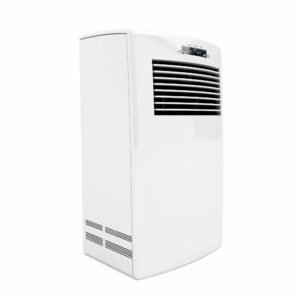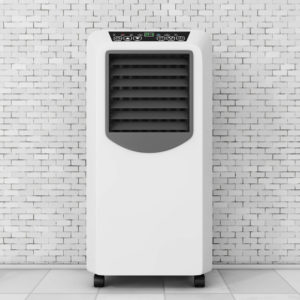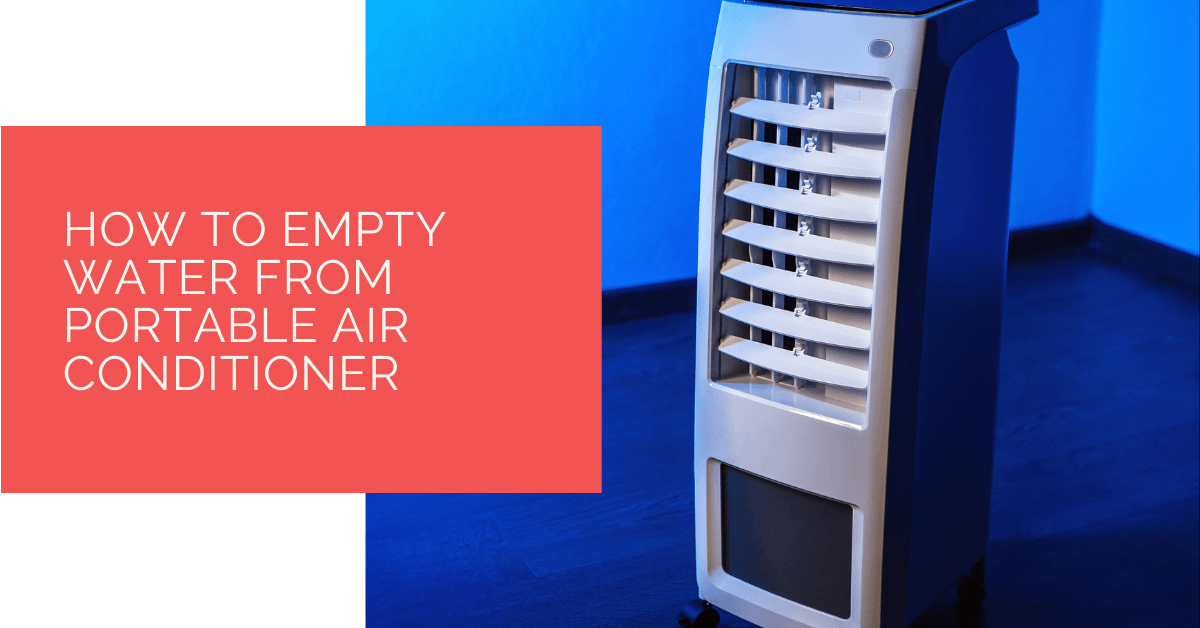Proper functioning of daily use gadgets like portable AC units is often the result of prompt maintenance. Hence, apart from periodic cleaning, you should also pay attention to the water tank of the AC unit.
You should regularly empty your portable AC by draining the collected water in a pan or bucket, or by using a drain hose, or a diffusion pump.
However, before you do, it is important to know the technical reasons behind the same. For instance, the frequency to drain water can be low in a specific model.
This article explains the water maintenance requirement of portable ACs in great detail, so read on ahead.
Contents
Key Takeaways
- Portable air conditioners accumulate water due to their dehumidifying process, and it’s essential to regularly drain this water to prevent overflow, bacterial growth, and equipment malfunction.
- There are three methods to empty water from a portable AC unit: using a drain pan, connecting an exhaust hose, or attaching a condensate pump, each with advantages and considerations.
- The frequency of draining your portable AC may vary depending on environmental conditions, but regular maintenance is recommended for optimal performance and to avoid water leakage.
A Quick Look at Portable Air Conditioners
First things first. Why do people buy portable air conditioners?
The reasons are quite straightforward:
- These are compact and portable
- They do not require permanent installation
- They are comparatively lightweight
Due to these advantages, portable air conditioners have been gaining popularity worldwide, experiencing steady growth in the market.
Water Accumulation in A Portable AC Unit
 Portable air conditioners tend to warm up and dehumidify the room. During this process, the unit gathers moisture that leads to gradual water collection.
Portable air conditioners tend to warm up and dehumidify the room. During this process, the unit gathers moisture that leads to gradual water collection.
In extremely humid conditions, this water vapor accumulation occurs at a fast pace. Hence, water begins to rise in the unit’s internal tank.
Generally, the air conditioner stops if the water reservoir overflows. However, the internal water reservoir can contain mid-level standby liquid in most cases. Hence, to prevent bacterial growth in standby water, you need to empty the portable air conditioner periodically.
Ways to Drain a Portable Ac
Let us understand the three methods to empty water from portable air conditioners:
Empty the Tank Water in A Drain Pan
The drainage hub or tank is usually located at the rear side of portable air conditioners. In case it is not there you can refer to the instruction manual to know the exact location.
To do so, follow these steps to allow your AC water to drain freely:
- Ensure you disconnect the electric supply to the air conditioner
- Position a pan or dish underneath the drain hub
- Pull out the drain plug and get ready to collect the drained water
- Clean excess water spilled on the floor with a mop or cloth
- Put the drain plug back to its original position
- Reconnect the AC supply after drying the area completely
So, by unplugging the drain cord, you can empty the internal water tank without any equipment. Still, this method can lead to excess water spilling in the area.
Use an Exhaust Hose
 A drain hose is a handy item that can prevent water spillage during the draining process. Importantly, you can make a DIY drain hose or purchase a high-quality one from any offline or online store.
A drain hose is a handy item that can prevent water spillage during the draining process. Importantly, you can make a DIY drain hose or purchase a high-quality one from any offline or online store.
Follow the steps below to ensure hassle-free drainage with the right synthetic hoses:
- Connect the drain hose to the plug into an inclined position
- Ensure the connection is secure by using a watertight fit seal
- After reaching a certain level, the water drains freely through the hose
You can secure the hose with a pipe or seal in this method. Also, ensure the hose outlet is connected outside or to a specified drainage location.
You can also keep two hoses as extra to be on the safer side.
Attach a Condensate Pump
This method uses a condensate or diffusion pump which is a semi-permanent fixture with two hoses. You connect the pump to the portable air conditioner.
When the system senses water getting collected to a certain point, it shuts down automatically. Then, the diffuser pump activates and sucks the water away from the internal water tank.
This completes the draining process completes as the excess water expels through the second hose. Overall, this method is highly convenient for draining the water tank.
Heat Pump Source: Reliable Heating and Cooling Solutions
At Heat Pump Source, we take pride in our unwavering commitment to serving the UK with top-tier HVAC solutions. From the efficiency of heat pumps and the cool relief of air conditioning to the warmth of boilers, radiators, and underfloor heating, our dedicated team is always at the forefront of innovation. We understand the unique needs of every household and business, and we strive to provide dependable health and cooling products and services that are tailored just for you. Ensuring your comfort and satisfaction is our utmost priority. Whether you have questions, need guidance, or require support, we’re always here to assist. Please don’t hesitate to contact us; we’re eager to be of service.
To Sum Up
The efficient working of a portable air conditioner depends on the proper maintenance of its working components. Draining the internal tank is a periodic maintenance tip for many models.
However, if you reside in areas with hot air, the moisture accumulation is negligible. Hence, the frequency of drainage will remain very low at such locations.
Still, draining portable air conditioners is a recommended activity. Also, you can choose any of the mentioned ways to drain your portable AC easily. Remember to keep an eye on the drain plug during all three methods.
After all, nobody likes water leakage from their HVAC equipment. Finally, try to follow all safety precautions and choose an easy-to-maintain portable AC unit.
About the Author
At Heat Pump Source, our articles are the product of a collaborative effort among a team of highly skilled HVAC experts. Our dedicated professionals, hailing from diverse backgrounds in heating, ventilation, air conditioning, and refrigeration, contribute their extensive knowledge and experience to every piece of content. This multidisciplinary approach ensures comprehensive coverage. Our commitment is to deliver authoritative, reliable, and tailored advice to meet the unique needs of every household and business across the UK.

